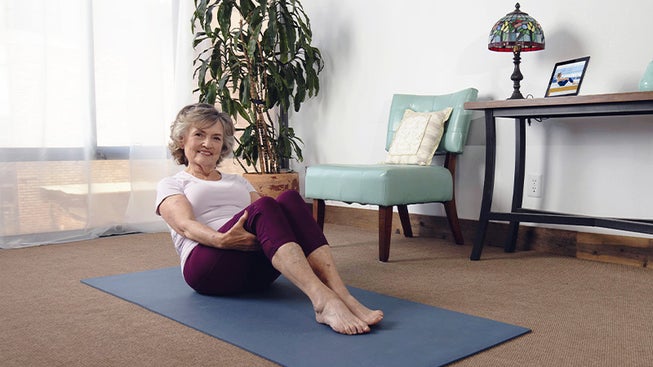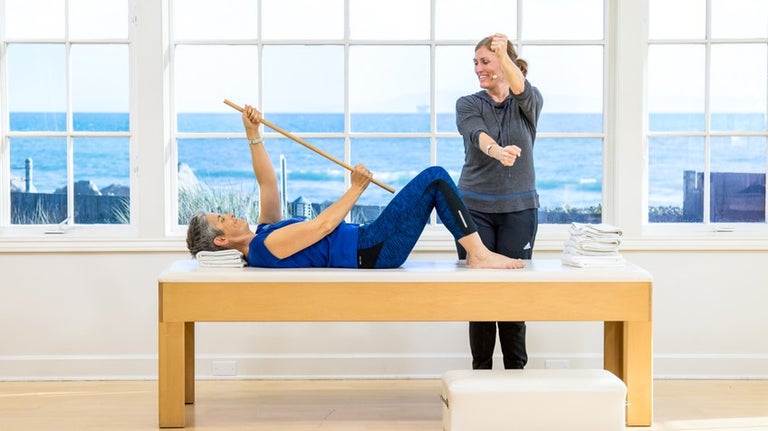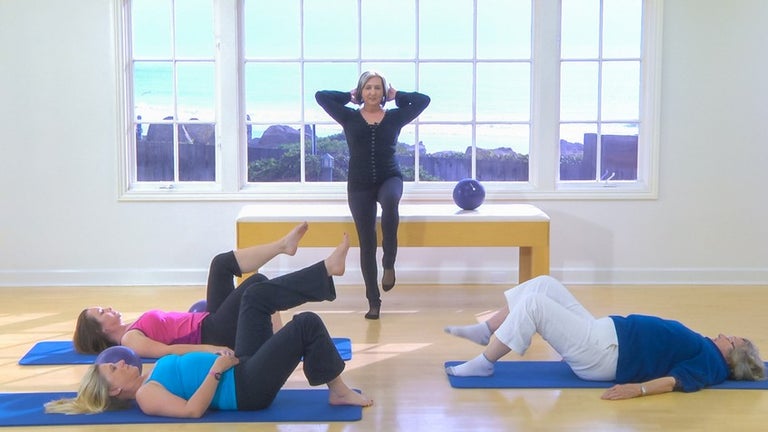Pilates for Breast Cancer Recovery

Pilates for Seniors: Breast Cancer Recovery
Breast cancer is the second most common form of cancer among women and is more prevalent after the age of 50. Although less common, men can be diagnosed with breast cancer too, generally at an older age. Pilates can play an integral role in breast cancer recovery, not only due to its physiological benefits, but also for boosting self-esteem, confidence, and an overall sense of well-being. Pilates is a natural choice for breast cancer recovery, as the exercises work the muscles in an effective, yet gentle, manner, resulting in enhanced strength, flexibility, and mobility.
Pilates Benefits for Breast Cancer Recovery
The reality is that breast cancer treatment can be taxing on the body physically, emotionally, and spiritually. Local treatment involves removing or destroying tissue around the cancerous area, such as through mastectomy, which entails removing the entire breast and possibly some lymph nodes, or lumpectomy, which involves removing the cancerous tumor, surrounding tissue, and possibly some lymph nodes, or lymph node removal. Systematic treatment focuses on destroying cancer cells throughout the entire body, such as through chemotherapy, hormone therapy, or biological therapy.
Results or side effects of these treatments typically include severe fatigue, weakened upper body strength, muscle atrophy, pain, swelling, scar tissue, reduced mobility, and weakness in daily activities. Chemotherapy or certain medications may also result in early menopause or Osteoporosis.
Exercise, like Pilates, can improve shoulder mobility, mood, body image, and quality of life. Exercise plays a vital role in reducing the risk of disease recurrence. Certain Pilates exercises can be performed within a few days after treatment or surgery. During the initial stages of recovery, a Pilates program focuses on breathing and gentle movement. Pilates for breast cancer recovery can be structured in phases to safely improve mobility and body awareness, gradually progressing from breathwork to increasing strength through added resistance.
Safe Pilates Exercises for Breast Cancer Recovery
Pilates is a full-body modality that targets specific body parts whilst organizing the body's overall structure. This fundamental aspect is greatly beneficial for breast cancer recovery, since the cancer itself and its accompanying treatments alter the upper extremity, which affects the alignment of the entire body. An efficient exercise program for breast cancer recovery includes focused breathwork, core work, pelvic exercises, and exercises for shoulder mobility and strength.
Body intelligence refers to the body's ability to adapt to and compensate for a part of the body that has suffered any form of trauma, injury, surgery, or invasive treatments to sustain a level of functionality. Pilates offers a safe and gradual approach to restoring balance and optimal function in the body. Ideally, over time, a breast cancer survivor will experience decreased pain and swelling, improved posture, and balance, as well as increased range of motion and strength. Safe Pilates exercises post-mastectomy include a concentrated breathing practice to mobilize and restore symmetry to the rib cage, along with releasing tension in the chest and upper back. For recovery, an emphasis is placed on exercises that increase shoulder mobility and strength, which is often compromised during treatment. Furthermore, Pilates core exercises establish a strong foundation for the body by enhancing alignment, posture, and balance.
Featured Classes for Breast Cancer Recovery
Pilates Modifications for Breast Cancer Recovery
Breast cancer recovery Pilates programs are designed to progress through a series of phases, beginning with building a solid foundation and then gradually moving to improving strength and mobility. This strategic progression aims to yield long-term, lasting results.
Following the phases and prioritizing quality over quantity are essential for achieving success in a Pilates program. It is worth noting that Pilates exercises can be performed on the floor, as well as sitting or standing. The key is to approach the exercises with gentleness, avoiding force or overexertion. Instead of moving until there is a pulling sensation, try performing fewer repetitions, which will gradually rehydrate the scar tissue. When lying on the back, position the arms higher than the heart to facilitate lymphatic drainage.
Pilates Exercises to Avoid
As a part of breast cancer recovery, Pilates, and exercise in general, can be beneficial. Breast cancer recovery requires specialized programming, thus, certain exercises and movements are best avoided. Traditional and advanced Pilates repertoire may not be suitable for individuals undergoing breast cancer recovery. Strenuous and high-intensity workouts should also be avoided.
Refrain from engaging in activities that involve a wide range of motion or exercises that push to the point of experiencing discomfort or strain. These activities can potentially impede and result in setback in the healing process. Avoid lifting anything over 5 lbs until 4-6 weeks post-surgery or after being cleared by your doctor. Strategic programs taught by qualified Pilates instructors can greatly assist in progressing through recovery.
Tips and Precautions
Physical activity should be an integral part of breast cancer recovery. Breast cancer diagnosis, treatment, and recovery can take a toll on the mind, body, and spirit. Exercise, specifically Pilates, has been shown to boost self-esteem, confidence, and a sense of independence.
Starting a new movement regime after dealing with breast cancer can be daunting. The important thing to remember is to start. Begin with gentle movement and you will see progress in time. Having a strong support group, whether it’s loved ones or speaking with other survivors, is highly recommended.
Similar to the undertaking of any exercise program, consult with your doctor prior to starting. If you experience pain, tightness or swelling during exercise, call your doctor.
Featured Blogs
Your Pilates Anytime Membership Benefits

- 15-Day Free Trial
- Unlimited Access to Thousands of Classes
- 95+ Pilates Programs and Challenges
- No Ads
- New Videos Weekly
- Available on All Your Favorite Devices









